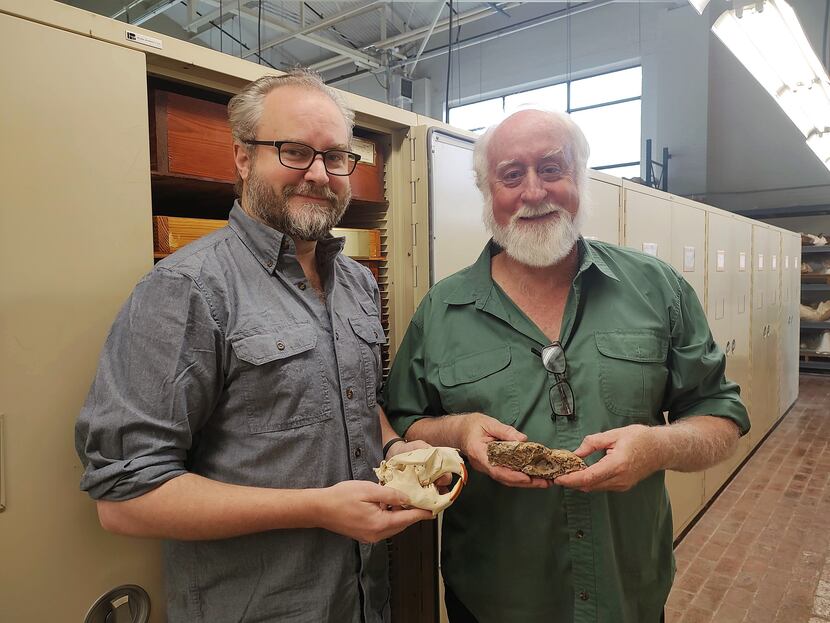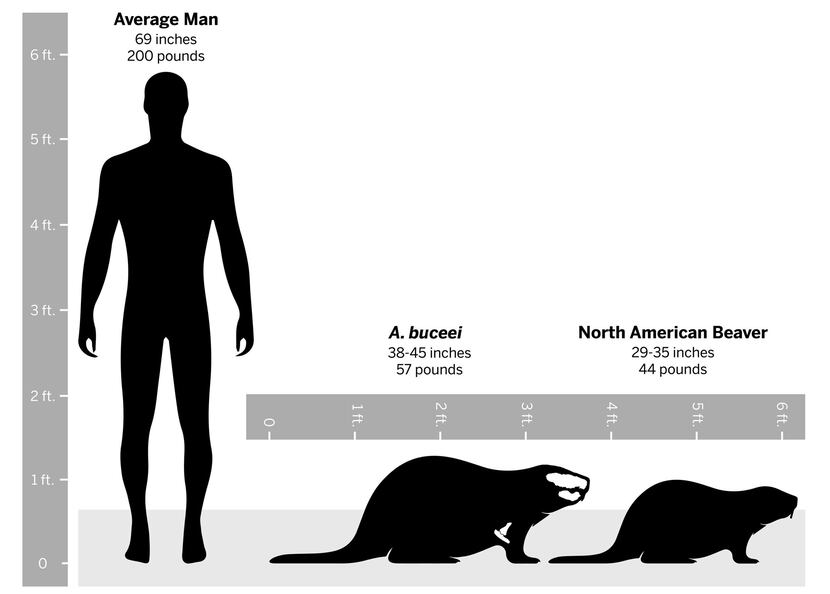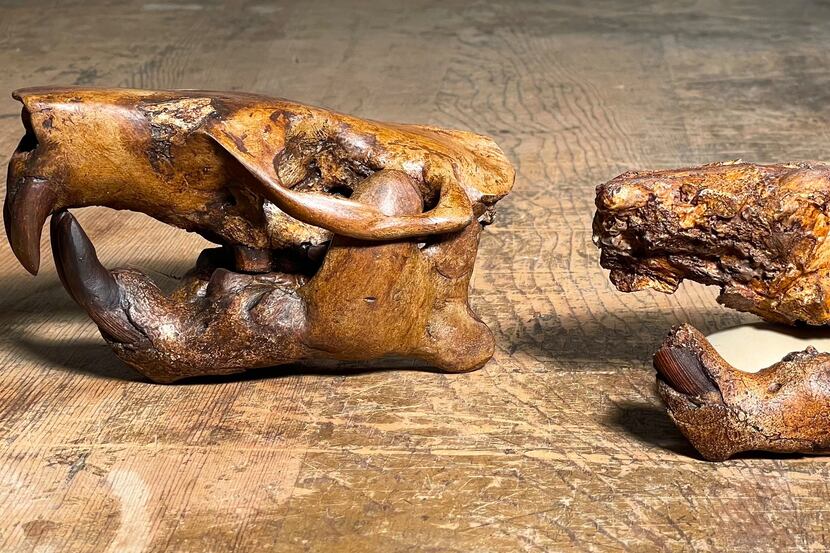Buc-ee’s just got prehistoric bragging rights.
A new species of ancient beaver was named after the Texas-based chain of travel centers known for selling everything from road trip snacks to holiday decor. The beaver, named Anchitheriomys buceei, lived in Texas about 15 million years ago. It looked a lot like today’s Texas beavers, except about 30% larger.
A. buceei was discovered by researchers at the University of Texas at Austin, who published their findings in the journal Palaeontologia Electronica.
Inspiration for the fossil’s name struck Steve May, a research associate at UT Austin’s Jackson School of Geosciences, while driving home from fossil work. “This is Beaver Country,” said a Buc-ee’s billboard on the side of the road.
“It just struck me, because I’d been thinking about these fossil beavers,” May said, “and I said, you know, you’re right. This is beaver country, and it’s been beaver country for 22 million years.”
A dam cool discovery
May studies the history of mammals in Texas, hoping to understand how Texas wildlife has changed over time. Beavers waddled the Texas coastal plain at least 22 million years ago and are found through most of eastern Texas today.
May was sifting through UT-Austin’s fossil collections when part of a skull fossil caught his eye.
“I picked it up, turned it over … and wondered, what in the world is this?” he said.

It’s rare to find partial skull fossils for Texas mammals, May said. Usually, paleontologists find teeth or parts of a bone. May noticed that parts of the fossil had filled with mud when it fossilized, leaving behind a cast of what the beaver’s brain may have looked like.
May and Matthew Brown, director of the Jackson School’s vertebrate paleontology collections, X-rayed the inside of the fossil and examined tiny holes at the edge of the skull called foramina, where nerves and blood vessels pass through. Those clues helped them determine that this beaver skull belonged to a new species.
The skull was originally collected by Texas paleontologists in 1941. One of them, Texas A&M University curator Curtis Hesse, wrote in his notes that it could belong to a new species. Hesse died in 1945 before he could publish his findings, but nearly 80 years later, May and Brown brought his work to completion.
With only a partial skull, May doesn’t know exactly what A. buceei looked like. He can’t say for sure whether the beaver had a big flat tail or gnawed down trees. His best guess based on the skull is that if we saw A. buceei walking on the side of the road, we’d say: “Well, that’s a really large beaver.”

A new generation of eager beavers
After passing the “Beaver Country” billboard on his drive, May thought about how the iconic Buc-ee’s mascot cultivated a whole new generation of beaver fans throughout Texas. Naming the species after the Buc-ee’s beaver felt meant to be.
“Your average Texan probably is not going to be looking at papers on fossil beavers,” he said. “But if you can try to link it to something that’s part of the popular culture, maybe there is an opportunity to get more people interested in the whole history of not just beavers, but of all different kinds of mammals and the environment they lived in, and how that has evolved over time.”
May has Buc-ee’s memorabilia of his own, including a T-shirt with a drawing of a mouse that becomes a possum, which becomes a squirrel, which ends up as the Buc-ee’s beaver. The caption? “Beaver-lution.”
While the scientific accuracy of the shirt is up for debate, May said it captures the heart of his research.
Adithi Ramakrishnan is a science reporting fellow at The Dallas Morning News. Her fellowship is supported by the University of Texas at Dallas. The News makes all editorial decisions.

